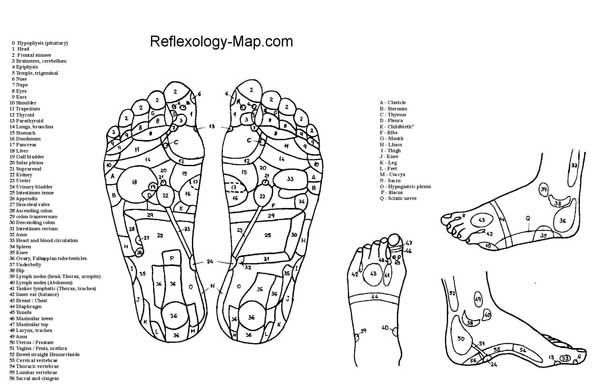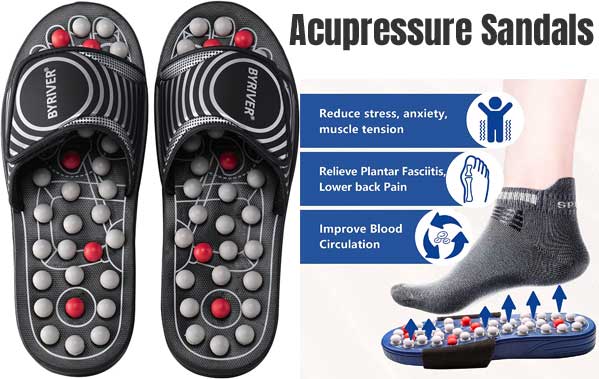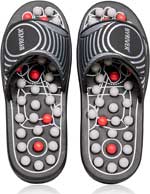So, can you really stop your headaches by pressing on your feet? Well, according to some sources, stimulating certain reflexology areas on your feet can help alleviate pain. But is there any truth to this claim? Let’s dig into foot pressure points for headaches (pun intended)….
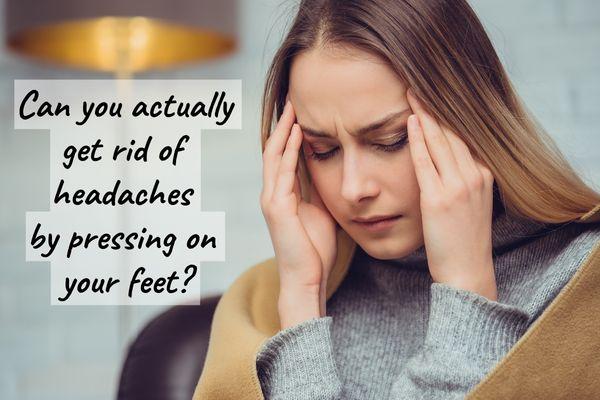
Foot Trigger Points for Migraines & Headaches:
First things first: which pressure points are we talking about here? According to the ancient Chinese practice of reflexology, there are several points on the feet that correspond to different parts of the body, including the head. These points are said to be connected to energy pathways in the body, and stimulating them can help restore balance and promote healing.
Note: One of the most commonly cited pressure points for headaches is located on the big toe, at the base of the nail bed. Another point is on the top of the foot, just behind the big toe joint.
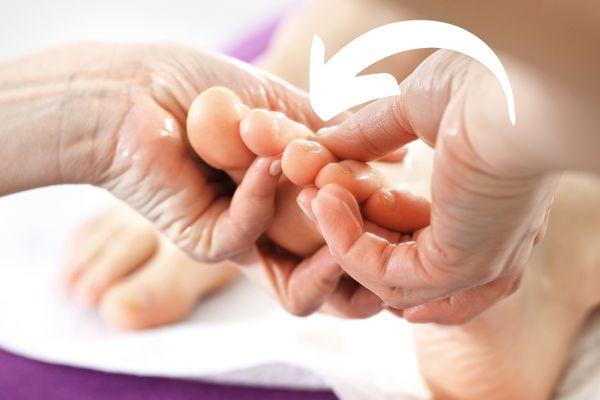
To stimulate these points, use your fingers or a reflexology tool to apply pressure and massage the area. Some sources suggest doing this for a few minutes several times a day, while others recommend longer sessions of 20-30 minutes.
Does Foot Reflexology Work to Relieve Head Pain?
So, the big question: does it actually work? Well, like most alternative therapies, the evidence is mixed. There have been a few small studies that suggest reflexology may be effective for reducing headache intensity and frequency, but the results are far from conclusive. And of course, there are plenty of anecdotal reports from people who swear by the technique.
But here’s the thing: even if reflexology does work for some people, it’s unlikely to be a magic cure-all. For example, headaches can have many different causes, from tension and stress to dehydration and underlying medical conditions. While stimulating your foot pressure points might help alleviate some of the symptoms, don’t expect it to address the root cause of your headaches.
And let’s not forget about the placebo effect. People can experience real physiological changes in response to a placebo treatment, simply because they believe it will work. So, even if reflexology doesn’t have any real physiological effect on your body, if you believe it will help, you might still feel better.
Of course, all of this assumes that you can actually stimulate the pressure points properly. If you’re not trained in reflexology, it can be difficult to know exactly where to press and how much pressure to apply.
Should You Use Pressure Point Sandals for Headache Relief?
But wait, there’s more! You can even buy pressure point sandals designed to stimulate the relevant points. These sandals have raised bumps and ridges on the footbed designed to target pressure and massage to the proper areas. And hey, if you’re going to try reflexology anyway, why not do it in style?
Unfortunately, there’s no real evidence that these sandals are any more effective than simply massaging your feet with your hands. All we have to go on is anecdotal reviews.
That said, some people find that walking around in bumpy sandals have helped stop their headaches, and they find it easier than massaging their own feet. So, is the trigger point stimulation actually working? Or could the pain relief be due to better circulation, improved sleep or reduced muscle tension helped by the acupressure sandals?
In conclusion, while there may be some truth to the idea that foot pressure points can help alleviate headaches, it’s not a surefire cure. Furthermore, reflexology sandals certainly can’t replace true medical treatment. However, if you want to avoid expensive pain pills, you may want to try alternative treatments first.
So, if you suffer from chronic headaches, see a healthcare professional to rule out any underlying medical conditions. They can do testing and recommend the best course of treatment for your specific type of headache. This may include medication or lifestyle changes.
When it comes to alternative therapies like reflexology, approach them with a healthy dose of skepticism. Don’t believe everything you read online. And don’t assume that just because something is “natural” or “ancient,” it’s automatically safe and effective.

